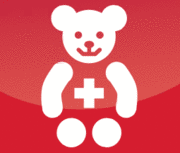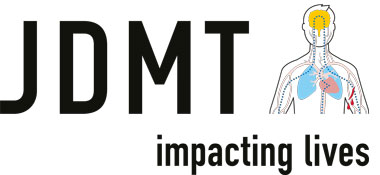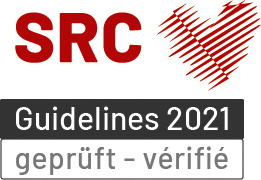Age-associated Risks and Preventative Measures
 A large Canadian study conducted in 2003 found that the survival rate was significantly increased after first aid was administered by qualified first aid responders, rather than waiting until care was administered by the arrival of an emergency doctor or emergency medical professionals. This study underlines the importance of first aid during paediatric emergencies. Further conclusions from the study: to focus on a limited number of measures and to concentrate on maintaining vital bodily functions, especially as such preventative measures are especially effective in children!
A large Canadian study conducted in 2003 found that the survival rate was significantly increased after first aid was administered by qualified first aid responders, rather than waiting until care was administered by the arrival of an emergency doctor or emergency medical professionals. This study underlines the importance of first aid during paediatric emergencies. Further conclusions from the study: to focus on a limited number of measures and to concentrate on maintaining vital bodily functions, especially as such preventative measures are especially effective in children!
Main Risks with Newborns
Cranial, cerebral and cervical spine trauma (falls from the nappy-changing table, stroller etc.,), respiratory tract infections (bronchitis, common cold, croup (and pseudo-croup), allergies (bees, wasps, milk, eggs, medications), Sudden Infant Death Syndrome, hypo/hyperthermia, dehydration, scalding.
Prevention
Child seats, safety belts, breastfeeding, smoke-free environments, no unnecessarily soft bedding, sleeping on their backs, vaccination, medically prescribed emergency kits, weather protection, supervision.
Main Risks with Infants
Cranial, cerebral and cervical spine trauma (traffic accidents, falls from windows, balconies and trees), drowning (garden pool, bath), respiratory tract infections (croup (and pseudo-croup), epiglottis), respiratory tract obstructions through foreign bodies («oral stage»: toys, peanuts, coins etc.), asthma, allergies (bees, wasps, milk, eggs, shellfish, nuts, medications), unsupervised intoxications and chemical burns (swallowing of cleaning fluids, medications etc.), febrile convulsions, hypo/hyperthermia, dehydration, suffocation (plastic bags), scalding (hot liquids in pots, jugs and glasses), burns (grill, firework), cuts.
Prevention
Children seats, safety belts, living space arrangements (safeguards around bodies of water, pool covers etc.), smoke-free environments, vaccination, medically prescribed emergency kits, secure storage of household toxic products, safe disposal of cigarette stubs, supervision.
Main Risks with School-age Children
Cranial, cerebral and cervical spine trauma (traffic accidents, sports injuries), asthma, allergies (bees, wasps, milk, eggs, shellfish, nuts, medications), metabolic dysfunctions (for example the first signs of diabetes), meningitis, drowning (swimming pools), burns (grill, fireworks), electric shocks.
Prevention
Child seats, seatbelts, helmet during sports (especially during cycling), medically prescribed emergency kits, tick protection, supervision
Main Risks with Teenagers
Cranial, cerebral and cervical spine trauma (traffic accidents, sports injuries), purposeful intoxications (alcohol, drugs, suicidal consumption of medication), drowning (natural bodies of water).
Prevention
Safety belts, wearing helmets during sports (especially during cycling, and motor biking), addiction prevention.








